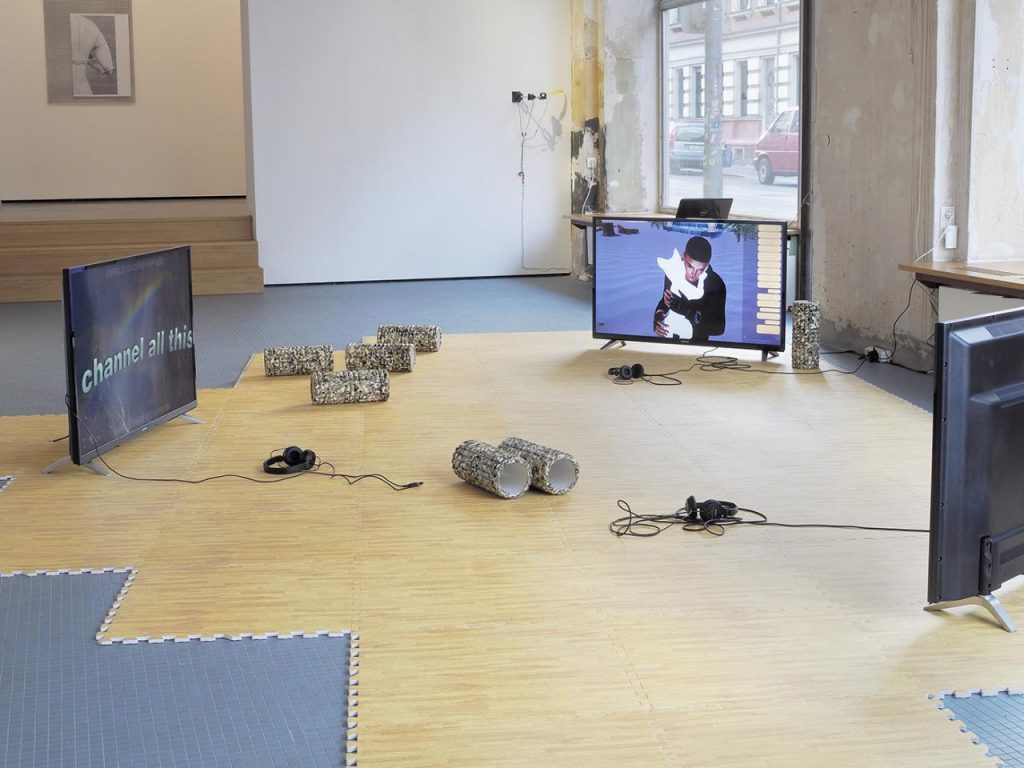
Foto: Paula Gehrmann
Eröffnung 14. Sep 2018, 19 Uhr
Ausstellungsdauer 14.9. – 21.10.18
Führung 15.9., 15 Uhr mit Eva Liedtjens und Nada Schroer, 11.10. 17 Uhr: Führung mit Collective Çukurcuma (Mine Kaplangı) und Eva Liedtjens
Künstler:innen anna anthropy, Miriam J. Carranza, Vera Drebusch, Line Finderup Jensen, Olga Holzschuh, Ali Miharbi, Lara Ögel, Mary-Audrey Ramirez, Berkay Tuncay
Kuratiert durch Collective Çukurcuma (Naz Cuguoğlu/ Mine Kaplangı, Serhat Cacekli), Eva Liedtjens, Nada Schroer
Die Ausstellung „Anger is a solution, if anger means kittens“ untersucht die ambivalenten Strukturen der Wut in übersättigten Konsumgesellschaften. Was kommt nach der Wut in post-demokratischen und post-kapitalistischen Gesellschaften? Wie geht man mit Wut auf individueller und sozialer Ebene um, wenn die Realität zwischen Katastrophe und Satire oszilliert?
Mit neun künstlerischen Positionen untersucht das Projekt nicht nur destruktive, sondern auch emanzipatorische Potenziale eines ambivalenten Gefühls. Können wir Wut als Katalysator neu definieren, um Gefühle der Verweigerung, Rache und Ohnmacht in individuelle und kollektive Handlungsformen zu verwandeln? Wie benutzt man absurde Bilder von Zensur, Unterdrückung und Rechtspopulismus gegen die Produzent_innen der Bilder selbst? Kann Ärger eine Lösung sein? Könnten Katzen es auch sein?
Die Ausstellung findet innerhalb des Jahresthemas des D21 Emotional States statt. Das Programm des D21 Kunstraum 2018 fragt nach der Politik der Emotionen. Wie beeinflusst, transformiert, bewirkt oder verstärkt Kunst Affekte und Emotionen und welche Rolle spielen sie für das Subjekt in der Gesellschaft?
The exhibition Anger is a solution, if anger means kittens examines manifestations of anger, frustration and exhaustion in post-digital, late-capitalist societies. If reality oscillates between disaster and satire, how one can deal with anger on an individual as well as on a social level?
By bringing together nine artistic positions, the exhibition investigates different potentialities of an ambivalent feeling and frames artistic expressions that redefine anger as an emancipatory rather than destructive emotion, a notion that Martha C. Nussbaum describes with the concept of “Transition”. According to the philosopher anger occurs in a transitional modus when a “person shifts off the terrain of anger toward more productive forward- looking thoughts, asking what can actually be done to increase either personal or social welfare.” From this perspective emotions like anger “still have some limited usefulness as a signal to self and/or others that wrongdoing has taken place, as a source of motivations to address it, and as a deterrent to others, discouraging their aggression.”
From that perspective anger appears as a tool to transform feelings of refusal, revenge and powerlessness into individual and collective forms of agency. How to use absurd images of censorship, oppression and right-wing populism against themselves? What might be the future of anger in post-revolutionary, post-democratic societies? Apathy, escapism, depression, irony or excess?
Can anger be a solution? Could kittens be as well?




